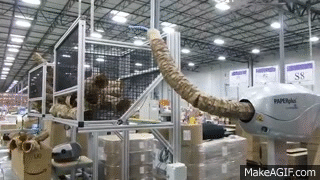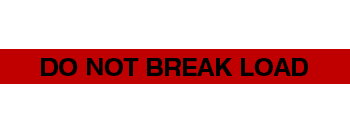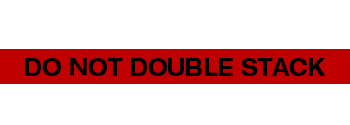Case Studies
MINI PAK'R Makes Packing Pottery a Pleasure, Packaging Problems a Thing of the Past for Minnesota Potter Jeff Oestreich
After a decade of dealing with the good, the bad and the ugly of
working with traditional packaging materials such as bubble, crumpled
paper and peanuts, potter Jeff Oestreich came to a simple conclusion:
there had to be a better way to package his pottery. And he has found it
in the desktop-size MINI PAK'R air cushion machine, from FP
International.
The potter, known internationally for his wheel thrown functional
ware has had his fair share of drama when it comes to dealing with
loosefill peanuts, and other less than perfect packaging options. He
literally stopped traffic on a Minnesota highway to chase packing
materials blown out of the back of his truck during a trip back in St.
Paul some 30 miles away. He was confronted with the cost of purchasing
and shipping (which almost cost more than the product itself) multiple
bundles/bags of brand name bubble or loosefill peanuts and then faced
the issues of storing them. He also tried various packaging combinations
to secure his ceramic art during shipping. After all of this, he knew
the time was ripe for change.
That's when Oestreich started his search for a better solution for packaging
his valuable pottery for shipping to art galleries and customers around
the globe. What he found - the MINI PAK'R packaging system from FP
International - has fundamentally changed the way he approaches his
work.
"I am so pleased with the MINI PAK'R that I would grab my glaze book first, the MINI PAK'R second in the event of a fire."
It's All in the Details
A potter for 43 years, Jeff Oestreich is recognized in ceramic art
circles around the world for his soda-fired pottery. Its surface is an
offshoot of a traditional 17th century German technique, and the
art-deco inspired designs are 100 percent his own. He is considered an
important part of the history of the studio pottery movement in the U.S.
and is renowned for his fine eye for form, glaze, pattern and surface
texturing.
At the heart of his enormous talent is his attention to detail, which
extends to the way he runs the business of his studio, including the
preparation of his pottery for shipping to each and every customer.
Finding a New Way to Package
When the Taylors Falls, Minnesota-based artist realized he was losing
valuable time on the packaging part of his business he began to search
in earnest for a totally different answer. And as an artist, time is
what it takes to produce beautiful work - and to make money.
Oestreich went online and did days of research on air cushion machines.
He found some six companies that sold industrial-strength packaging
systems. He contacted each to try to set up a leasing arrangement for a
machine, to no avail. All of the companies required a higher volume of
packaging materials than Oestreich used in his studio, or used by a
consortium of area pottery studios, for the lease.
Then, he began talking to Larry Reimer of FP International. The FP
International sales rep, after learning of Oestreich's unique needs,
told him about the MINI PAK'R, which was still in the development phase
but was slated for release in early 2007. Oestreich added the rep's
number to his speed dial and checked back often on the status of the
product release. When the first MINI PAK'R machines rolled off the
assembly line in March of 2007, Oestrich was the first potter in the
U.S, to purchase the MINI PAK'R, and the 41st customer overall.
Easy Start Up, Small Footprint, Lots of Options
20 minutes after opening the box, Oestreich was quickly off and
running with his new packaging system. Having a dedicated area for
shipping is not a problem for Oestreich, who has a relatively spacious
2,500 square-foot studio. Even so, the small footprint of the MINI PAK'R
and the minimal space required for storage of the film is a real plus
for the potter.
For Oestreich, the protection of his pottery comes first and
foremost. His work, which sells for $50 to $1000 per piece and includes
pitchers, tableware, drinking vessels and a variety of serving pieces,
is one of a kind.
With each piece being one-of-a-kind, guaranteeing against breakage is
of utmost importance. To Oestreich, breakage means money lost and
possibly his reputation damaged. Often, a claim has to be paid to the
gallery owner or customer, and even more critical is having to repair a
damaged relationship. So, in Oestreich's mind, the best approach is to
avoid damage from the outset.
A Perfect Record
Since the purchase of the MINI PAK'R in March of 2007, the Minnesota
potter has shipped over 1000 pieces, with no breakage. The potter says
the air cushions made by the MINI PAK'R are ideal for packaging ceramic
art and other fragile items because the artwork does not shift when
packed using the air cushions. Shifting pottery was a big issue when he
packed his pottery in loosefill peanuts and bubble wrap.
Oestreich cites a recent experience with the Red Lodge Clay Center, a
top-tier gallery located in Red Lodge, Montana as a perfect example of
the power of the MINI PAK'R. For an exhibition of 100 of his carefully
crafted tea bowls at the Montana gallery, Oestreich made air cushions
with the MINI PAK'R and used them to package the one of a kind pieces
for shipping. Even with 40 tea bowls in each box there was absolutely no
damage.
Money-saving Packaging at Its Easiest
Oestreich is so pleased with the MINI PAK'R that he says he would
grab his glaze book first, the MINI PAK'R second in the event of a fire.
Now that's a strong loyalty statement. Another key selling point for
Oestreich is the convenience. Now he can make the packaging product when
he needs it, and in whatever quantity is required. Storage is also
easier.
Because UPS, Oestreich's shipper of choice requires double boxing for
the shipment of fragile items such as pottery, Oestreich says that the
NOVUS Double Cushion� film and the NOVUS Supertube� film works best for
this application. The space filled by the air cushions is some two
inches between the two boxes.
For the inner packaging - the pottery itself - Oestreich wraps each
piece with corrugated paperboard and a length of Double Cushion air
cushions.
Also, the fact that the mess is eliminated makes packaging a real
pleasure for Oestreich now. No more multiple rolls of bubble wrap to
deal with. Instead, he can focus on providing a better customer
experience with his packaging. He starts with brand new boxes,
confidently wraps each piece in the corrugated board and the MINI PAK'R
air pillow then places a high-quality postcard of his work, an invoice
and a decadent chocolate on top to finish the presentation. For
Oestreich, the MINI PAK'R has turned a miserable experience into
something pleasurable for him and for the person who is opening the
package.
Creative Uses for the MINI PAK'R
Oestreich has found a number of creative ways to put his MINI PAK'R
to good use. He brought his MINI PAK'R along when he moved his father
(and his multitude of small items and pottery) into a new home. With
this arrangement, he was able to make air cushions whenever and wherever
he needed. Also, each spring Oestreich opens his studio for the St.
Croix Valley Potter's tour, which draws over 1,000 pottery aficionados
from across the country. Many of these visitors arrive by plane and need
a way to securely wrap their new pottery pieces for the trip home.
Voila! The MINI PAK'R has provided the perfect solution for on-site
packaging.
Potter Jeff Oestreich is sold on the benefits of owning the MINI
PAK'R. It has made his life as a world-class potter easier. It has
provided a new way to present his work, and to package it for safe
delivery. In fact, Oestreich believes that the MINI PAK'R is the
packaging product of the future for the entire art world. And he is
working to convert them, one potter at a time.











 idea of an integration on the basis of PAPERplus® Chevron during
several meetings with the specialists from the central design center in
Cincinnati.
idea of an integration on the basis of PAPERplus® Chevron during
several meetings with the specialists from the central design center in
Cincinnati.






